Significance of Muslim Architecture
Muslim architecture is one of the most influential and celebrated architectural traditions in the world. It has shaped not only the landscapes of Muslim-majority countries but has also left a lasting impact on global architecture. From grand mosques with towering minarets to intricately designed palaces and tombs, Muslim architecture is known for its beauty, complexity, and deep symbolism. The use of geometric patterns, calligraphy, and symmetrical designs reflects the Islamic emphasis on unity, balance, and the divine order of the universe.
Purpose of the Post
The purpose of this post is to explore the rich legacy of Muslim architecture and understand its influence across different regions and cultures. By delving into the key features, historical developments, and iconic examples of Muslim architecture, we can gain a deeper appreciation of its artistic and cultural significance. The post will also highlight how Muslim architectural styles have been adapted and preserved over time, continuing to inspire modern design and construction.
Muslim architecture is not just about beautiful buildings; it’s about the expression of cultural identity, spiritual beliefs, and the harmonious blend of form and function. Whether through the majestic domes of the Hagia Sophia, the delicate arches of the Alhambra, or the serene courtyards of the Great Mosque of Córdoba, each structure tells a story of the civilization that created it. This exploration aims to shed light on these stories and encourage a greater understanding of the enduring legacy of Muslim architecture.
Historical Background

Origins of Muslim Architecture
Muslim architecture began in the 7th century with the rise of Islam and the establishment of the first Muslim communities. As Islam spread across different regions, it encountered a variety of cultural and architectural traditions. Muslim architects incorporated elements from these diverse traditions, such as Byzantine, Persian, and Roman styles, creating a unique architectural language that reflected Islamic values and beliefs.
Key Periods of Development
- Umayyad Period (661-750 AD): The Umayyad dynasty is credited with establishing the first major Islamic architectural projects. One of the most famous examples is the Dome of the Rock in Jerusalem, built in the late 7th century. The Great Mosque of Damascus, also from this period, is another significant structure that showcases early Muslim architectural innovation.
- Abbasid Period (750-1258 AD): The Abbasids, who ruled from Baghdad, expanded on the architectural foundations laid by the Umayyads. They built grand mosques with large courtyards and hypostyle halls, such as the Great Mosque of Samarra. The use of geometric patterns and intricate tile work became prominent during this period.
- Ottoman Period (1299-1922 AD): The Ottoman Empire introduced new architectural forms, including the iconic domes and minarets that are now closely associated with Muslim architecture. The Sultan Ahmed Mosque (Blue Mosque) in Istanbul is a prime example of Ottoman architectural brilliance.
- Mughal Period (1526-1857 AD): The Mughal Empire in India combined Persian, Indian, and Islamic elements to create some of the most famous structures in the world, including the Taj Mahal. Mughal architecture is known for its use of white marble, elaborate gardens, and symmetry.
Cultural and Religious Influences
Muslim architecture is deeply influenced by Islamic cultural and religious principles. The focus on unity, balance, and the reflection of divine beauty is evident in the design of mosques, palaces, and public buildings. The use of calligraphy, arabesques, and geometric patterns is not just decorative but carries spiritual significance, embodying the idea of an infinite and all-encompassing Creator. These influences have helped Muslim architecture evolve while maintaining its distinctive identity.
Key Features of Muslim Architecture
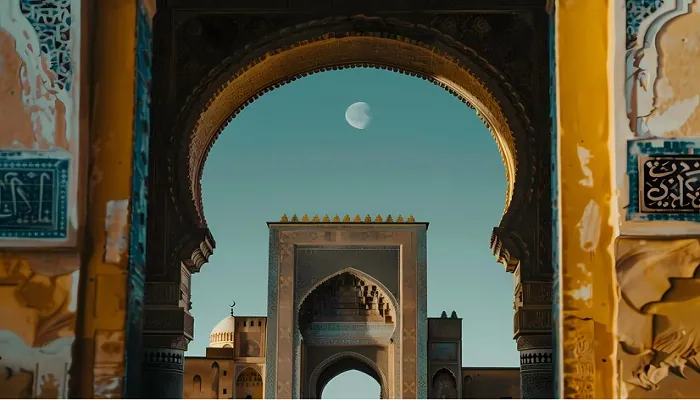
Domes and Minarets
Domes and minarets are two of the most recognizable features of Muslim architecture. The dome, often placed at the center of a mosque, symbolizes the vault of heaven and is a focal point of Islamic worship spaces. Domes are not only symbolic but also functional, as they help amplify the sound within a mosque, making it easier for worshippers to hear the imam during prayers.
Minarets, tall slender towers typically attached to mosques, serve both a symbolic and practical purpose. They represent the connection between the earth and the heavens, and traditionally, the call to prayer (adhan) is issued from the top of a minaret, calling the faithful to worship.
Geometric Patterns and Calligraphy
Islamic art avoids the use of human or animal figures in religious contexts due to religious beliefs, which has led to the development of intricate geometric patterns and calligraphy as central elements of design. Geometric patterns are used to represent the infinite nature of Allah and the underlying order of the universe. These patterns, with their repetitive designs, create a sense of harmony and balance.
Calligraphy, particularly of Quranic verses, is another key feature. Arabic script is artistically integrated into architectural elements, decorating walls, domes, and doors. The use of calligraphy not only beautifies the space but also serves as a constant reminder of Islamic teachings.
Courtyards and Gardens
Many Muslim architectural designs incorporate courtyards and gardens, which are symbolic of paradise in Islamic tradition. These spaces serve as tranquil areas for reflection and relaxation. Courtyards are often found at the center of mosques and palaces, providing natural light and ventilation. Gardens, with their lush greenery and flowing water, are designed to create a peaceful and serene environment, representing the Islamic concept of Jannah (heaven).
Arches and Vaults
Arches and vaults are structural innovations that have become defining features of Muslim architecture. The pointed arch, in particular, is a hallmark of Islamic design, known for its elegance and strength. These features not only add aesthetic appeal but also distribute weight more efficiently, allowing for the construction of larger and more complex structures. The use of arches and vaults enabled Muslim architects to create expansive, open interiors that are both functional and beautiful.
Iconic Examples of Muslim Architecture
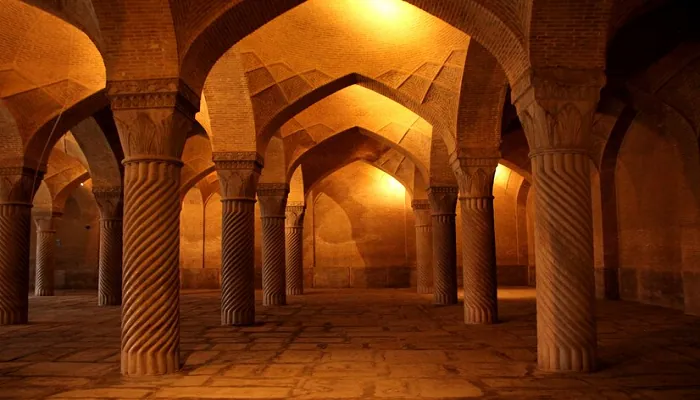
The Great Mosque of Córdoba
The Great Mosque of Córdoba, located in Spain, is a remarkable example of Umayyad architecture. Originally built as a mosque in the 8th century, it showcases the rich cultural fusion of Islamic art and architecture with local traditions. The mosque is famous for its stunning hypostyle hall, characterized by rows of arches and columns. The red and white horseshoe arches are particularly iconic, creating a visually striking and serene space. Over time, the building was converted into a cathedral, but its Islamic architectural elements remain a testament to the grandeur of Muslim architecture in medieval Spain.
Taj Mahal
The Taj Mahal in India is one of the most famous examples of Mughal architecture, built in the 17th century by Emperor Shah Jahan in memory of his wife Mumtaz Mahal. This white marble mausoleum is celebrated for its exquisite beauty and intricate details. The Taj Mahal combines elements of Persian, Islamic, and Indian architectural styles, with its large dome, symmetrical design, and stunning gardens. The delicate inlay work, featuring precious stones and intricate calligraphy, adds to its magnificence. The Taj Mahal is not just a symbol of love but also a masterpiece of architectural precision and creativity.
Alhambra
The Alhambra, located in Granada, Spain, is a splendid example of Islamic art and architecture in Europe. Originally constructed as a fortress in the 9th century, it was later transformed into a royal palace by the Nasrid dynasty. The Alhambra is renowned for its elaborate stucco work, detailed tile mosaics, and stunning courtyards. The Palace of the Lions, with its famous fountain, is a highlight, showcasing the delicate interplay of water, light, and architecture. The Alhambra’s design reflects the intricate artistry and attention to detail characteristic of Islamic architecture.
Sultan Ahmed Mosque (Blue Mosque)
The Sultan Ahmed Mosque, commonly known as the Blue Mosque, in Istanbul, Turkey, is a prime example of Ottoman architectural achievements. Built in the early 17th century, it is famous for its large dome, six minarets, and the blue tiles that adorn its interior walls, giving it the nickname "Blue Mosque." The mosque's design reflects a blend of traditional Islamic architecture with Byzantine elements, particularly the influence of the nearby Hagia Sophia. The Blue Mosque remains an active place of worship and a symbol of the architectural and cultural heritage of the Ottoman Empire.
Influence on Global Architecture
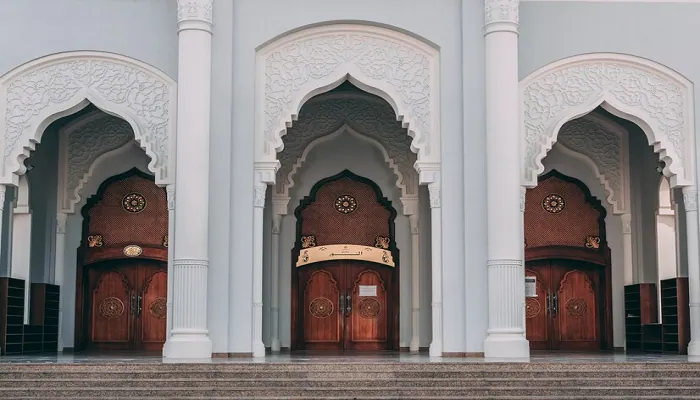
Spread of Islamic Architectural Styles Across Different Regions
Islamic architecture has had a profound impact on various regions around the world. As the Islamic Empire expanded, so did its architectural styles, spreading across the Middle East, North Africa, Spain, and parts of Asia. Each region adapted and integrated Islamic architectural elements with local traditions, leading to a rich diversity of styles. For example, in North Africa, the use of intricate geometric patterns and calligraphy became a defining feature, while in India, the Mughal Empire fused Islamic and indigenous styles, resulting in iconic structures like the Taj Mahal.
Influence on European Architecture, Especially During the Renaissance
Islamic architecture also significantly influenced European architecture, particularly during the Renaissance. After the Crusades and through trade, Europeans were exposed to the grandeur and sophistication of Islamic buildings. Elements such as horseshoe arches, ribbed vaults, and intricate tile work were incorporated into European designs. The Alhambra in Spain, with its elaborate stucco work and symmetrical courtyards, directly inspired Renaissance architects who sought to emulate its beauty and precision. The knowledge of mathematics and geometry, which played a crucial role in Islamic architecture, was also transmitted to Europe, further shaping architectural practices.
Modern Interpretations and Adaptations of Muslim Architectural Elements
In modern times, architects around the world continue to draw inspiration from Islamic architecture. Contemporary buildings often incorporate elements like domes, arches, and geometric patterns, reinterpreting them in innovative ways. For instance, modern Islamic-inspired designs can be seen in government buildings, mosques, and cultural centers that blend traditional elements with modern materials and techniques. The use of Islamic principles in sustainable design, such as passive cooling techniques in hot climates, is also gaining popularity. These adaptations demonstrate the enduring legacy of Islamic architecture and its ability to evolve while maintaining a connection to its rich heritage.
Cultural and Religious Significance
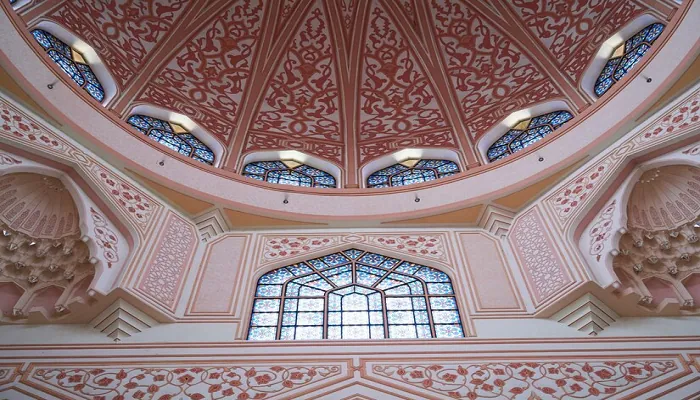
How Muslim Architecture Reflects Islamic Beliefs and Values
Muslim architecture is deeply rooted in Islamic beliefs and values, reflecting the religion's emphasis on beauty, unity, and spirituality. One of the key aspects of Islamic architecture is the use of geometric patterns and calligraphy, which avoids the depiction of living beings. This practice aligns with the Islamic principle of aniconism, which discourages the representation of sentient beings in religious art. Instead, Muslim architects use intricate geometric designs and Arabic script to create visually stunning spaces that convey the infinite nature of Allah (God) and the harmony of the universe.
Domes and minarets, common features in Muslim architecture, also carry deep religious symbolism. The dome, often found atop mosques, represents the vault of heaven, while the minaret serves as a visual and auditory reminder of the call to prayer, emphasizing the central role of prayer in the lives of Muslims. The symmetry and balance found in Muslim architecture reflect the Islamic belief in order and the divine nature of creation, further reinforcing the spiritual atmosphere of these spaces.
The Role of Architecture in Fostering Community and Spirituality
Muslim architecture plays a vital role in fostering community and spirituality. Mosques, the most significant architectural form in Islam, are not just places of worship but also centers of community life. The design of a mosque typically includes a large prayer hall, a courtyard, and often a madrasa (school), creating a space where people can gather, learn, and engage in social activities. The open and inclusive design of mosques encourages a sense of unity among worshippers, promoting the Islamic value of brotherhood.
Courtyards and gardens, commonly integrated into Muslim architectural designs, serve as tranquil spaces for reflection and meditation. These spaces are designed to provide a peaceful environment that enhances spiritual connection and contemplation. The layout of Muslim architecture often emphasizes the direction of Mecca, ensuring that all who enter are oriented towards this sacred site, further reinforcing the spiritual focus of the space.
In essence, Muslim architecture is not just about creating functional structures; it is about crafting spaces that embody Islamic values, nurture the soul, and bring communities together in a shared spiritual journey.
Preservation of Muslim Architectural Heritage
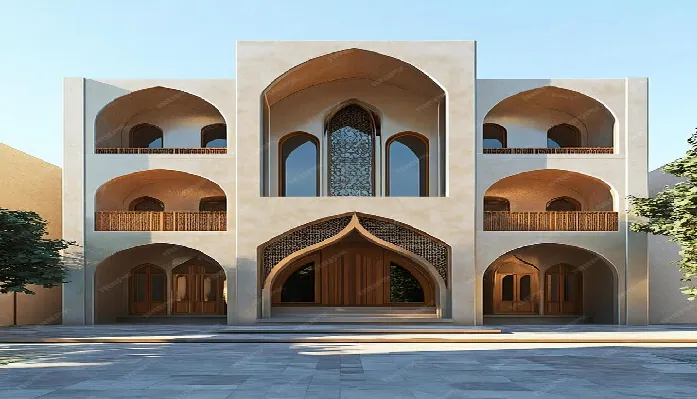
Challenges in Preserving Ancient Islamic Structures
Preserving ancient Islamic structures presents several challenges. Over time, many of these historical buildings have suffered from natural wear and tear, exposure to the elements, and even deliberate destruction due to conflicts or neglect. Environmental factors, such as humidity, temperature fluctuations, and pollution, can cause significant damage to the materials used in these structures, such as stone, wood, and plaster. Additionally, the growing urbanization in many parts of the world threatens the preservation of these historic sites, as modern development can encroach on or even replace these valuable cultural landmarks.
Another significant challenge is the lack of resources and expertise needed for proper restoration and conservation. Restoring ancient Islamic architecture requires specialized knowledge of traditional building techniques and materials, which may be scarce. Furthermore, many of these structures are located in regions facing political instability, making it difficult to carry out preservation efforts.
Efforts and Organizations Dedicated to Conservation
Despite these challenges, numerous efforts and organizations are dedicated to the conservation of Muslim architectural heritage. International bodies like UNESCO have recognized several Islamic sites as World Heritage Sites, providing them with legal protection and financial support for their preservation. Local governments and cultural organizations in Muslim-majority countries also play a vital role in maintaining and restoring these historical buildings.
Non-governmental organizations (NGOs) and community groups are actively involved in raising awareness and funds for preservation projects. These groups often collaborate with experts in architecture, history, and archaeology to ensure that restoration efforts are both accurate and respectful of the original designs. Educational programs and workshops are also being conducted to train new generations in the skills needed for conservation work.
Importance of Preserving This Legacy for Future Generations
Preserving Muslim architectural heritage is crucial for maintaining a tangible link to the past, allowing future generations to appreciate the cultural, artistic, and religious achievements of Islamic civilization. These structures are not just buildings; they are symbols of identity, history, and spiritual significance. By safeguarding them, we ensure that the rich legacy of Muslim architecture continues to inspire and educate people around the world, fostering a deeper understanding and respect for Islamic culture and its contributions to global heritage.
The legacy of Muslim architecture remains a profound testament to the creativity and ingenuity of Islamic civilization. Its distinctive features, from intricate geometric patterns to majestic domes and minarets, continue to captivate and influence modern design. These architectural styles not only reflect a rich cultural and religious heritage but also inspire contemporary architects around the world. Appreciating and studying this heritage helps us understand and value the contributions of Muslim architecture to global history. By exploring these magnificent structures, we honor their enduring significance and ensure their stories are remembered and celebrated for generations to come.
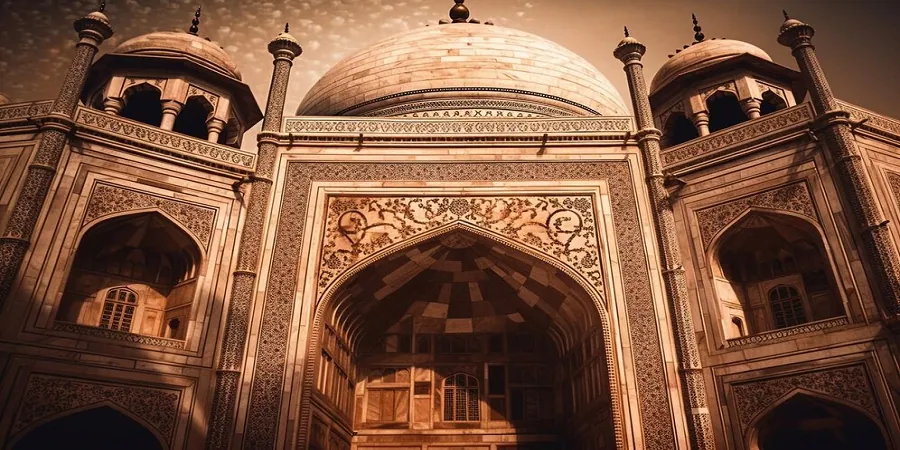
Comments